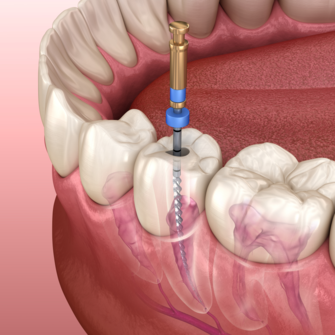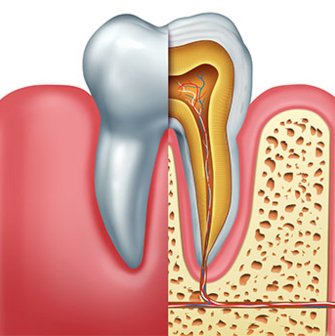
Root Canal Treatment Overview
Root canal treatment is the procedure used to repair a tooth that has become seriously infected or decayed. The procedure not only saves teeth but also prevents subsequent infections in the future.
Who is this for
- People with a serious tooth infection.
- People who experience multiple infections in the same tooth.
- People with a serious gum infection.
Treatment abroad
- Minimum stay: 1 Day
- Number of trips: 1
Treatment process
- Most root canal treatments take place over two appointments.
- Each appointment can last anywhere between 30 and 90 minutes.
Root Canal Treatment Cost
Type
Price
Root Canal - Incisor
1 root, filling not included
€50
Root Canal - Premolar
2 roots, filling not included
€100
Root Canal - Molar
3 roots, filling not included
€150
Root Canal Treatment Process
What is root canal treatment?
Root canal treatment is a procedure designed to remove infected tissue from inside a tooth and the surrounding tissues. The treatment is administered within the inner passages of the tooth - between the pulp and the roots. A dentist may need to remove tissue from the surrounding areas. Most root canals result in the removal of the nerve and the pulp. This will usually stop the pain in your tooth but not necessarily in the infected areas around it. There are several reasons why you might need a root canal. The most common is decay caused by poor dental hygiene practices. Other potential causes include cracks or chips and disease. The need for a root canal treatment is usually quite obvious. The main symptom is chronic pain, which is usually worsened by eating, pressure and changes in temperature. Other signs you might need the procedure include a small bump in your gum, tenderness, swelling and darkening of the tooth.
How does root canal treatment work?
Root canal treatments usually take place in stages. The pulp and the nerve are removed in one session. A second session is usually devoted to sealing the cavity to prevent further infections.
- Diagnosis: In order to diagnose the problem, your dentist will need to take an x-ray. This will determine how bad the infection is and whether an extraction will be required.
- Anaesthetic: The first stage of the actual procedure involves the numbing of the tooth and the surrounding gum. You may need up to three separate injections to ensure you don't feel pain during treatment. The dentist will also place a rubber sheet around your tooth to keep it dry.
- Drilling: The next stage of the procedure involves the dentist gaining access to the inner structures of your tooth. Unfortunately, this involves drilling a small hole.
- Removal: The dentist uses a set of specialist tools to remove the nerve and pulp via the drilled hole. Once the infection has been completely removed, the dentist will give you a temporary filling. In many cases, a customised crown is prepared afterwards. The filling usually consists of a rubber compound (which fills the cavity), and a standard filling agent.
- The final stage: The final stage of a root canal treatment is usually the application of a permanent crown, filling or restorative agent. If there's still some infected material in your tooth, you may need a third appointment. This is because your dentist will leave the tooth open to allow for more drainage.
- Ongoing care: A lot of people never experience any issues with their treated tooth again.
What should I expect?
While a degree of pain is likely - either during or after the procedure - many patients don't experience any significant pain. Of course, many people are nervous about such an invasive procedure. Try to remain calm and still. You're likely to experience some strange sensations and a lot of vibration, but this is normal. Root canal treatments are now routine for dentists. Expect up to three sessions, but more may be required if there are complications.
ROOT CANAL GALLERY
Root canal process images
After Care
What is the post-operative diet for a root canal treatment?
- Avoid crunchy foods such as corn, apples, etc. as they could damage the treated tooth and cause pain.
- Excessively hot and spicy food should also be avoided as it causes more sensitivity.
- Alcohol should be avoided as it causes excessive bleeding.
- Chewy and hard foods could pull out the temporary filling, hence should be avoided.
Root Canal Treatment FAQ
Potential risks and side effects
- Inflammation of the surrounding tissues.
- Residual pain.
- Darkening of the treated tooth.
- Fracturing of the tooth.
- An extraction may be needed if the treatment is unsuccessful.
- Studies have shown that around 90% of root canals save the offending tooth for a minimum of eight years.
- Tooth survival rates are significantly increased when a crown is attached.
- Success rates and the life of a treated tooth significantly increase when the patient adheres to strict oral hygiene practices.
- The chances of success depend on how much of the tooth remains. A lot of treated teeth last a lifetime.
Alternatives treatments
Plan your treatment and get a quote online.
30 minutes free online video and phone consultation. Schedule your virtual visit.









